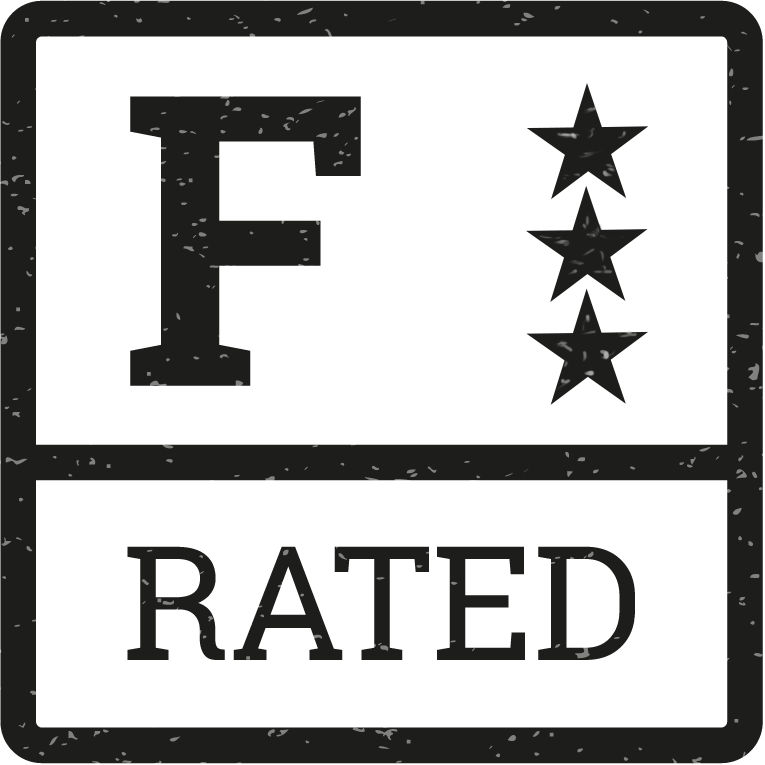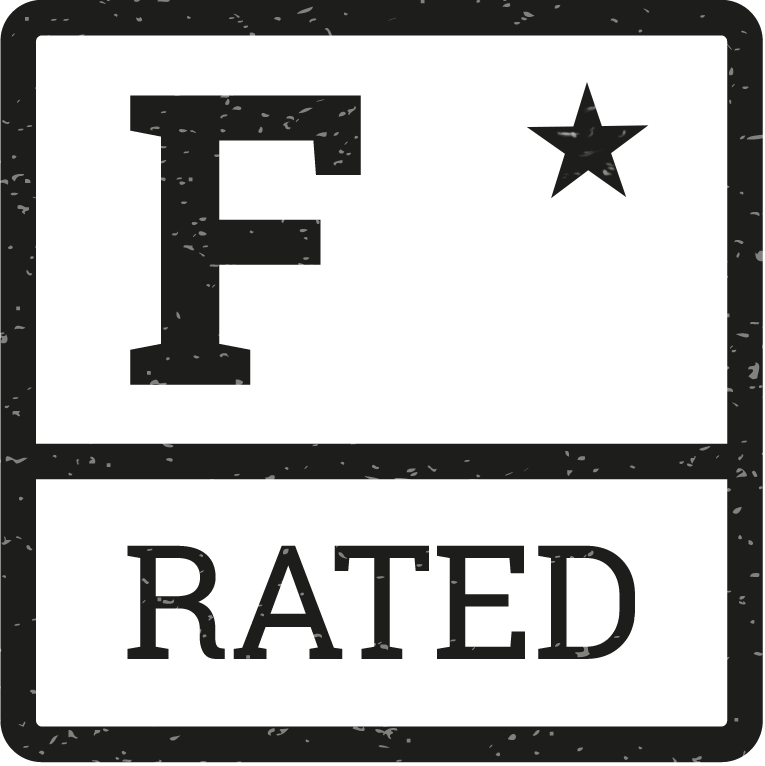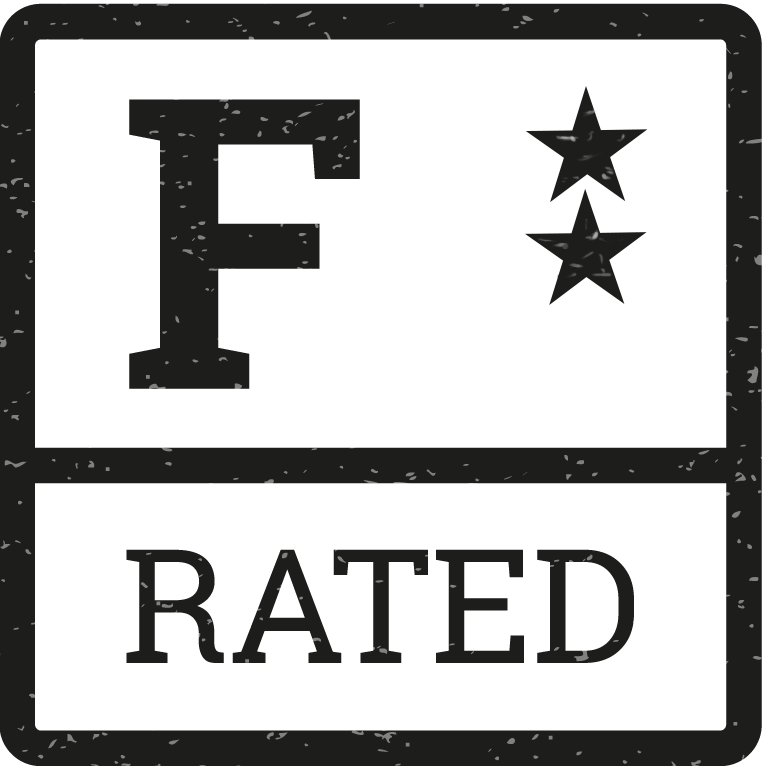Faces Places [Visages villages]
French director Agnès Varda is joined by a young photographer as they journey through rural France taking photos of people they meet and displaying their images on village walls. Funny, quirky and ultimately moving.
What's this?

Film Notes
Agnes Varda is almost 90 years old and she is still making films. That alone should be cause for dancing in the streets. But wait, there’s more: Agnes Varda is almost 90 years old and she is still making fantastic films. Searching, compassionate, provocative, funny, sad ones. This is one of them. You should see it, and then go dancing in the streets.
Varda has been making films since 1955, and throughout her career, which saw her as one of the key figures in the French New Wave, she’s been a generous and ingenious collaborator. For this movie, which is part character drama (with real-life characters), part road documentary, and part essay-film, Varda co-signs with the French artist who calls himself JR. A bit over one-third Varda’s age, he always sports a hat and dark glasses. His work is in photography and public art. He travels through Europe in a van that’s a photo booth, creating large-format portraits of people he meets. He goes even larger with some of his other works, creating giant pictures that he then affixes to the sides of buildings, or train cars, or ships. After which he documents that work, and lets nature take its course—the images are generally washed away by time. In this film, one is very dramatically swept off by the tide.
JR’s is a humanist artistic mission; he gets ordinary people to partake in his work, which inevitably delights them. This movie, which has the French title “Visages Villages,” opens with scenes set in various places where, Varda and JR explain in voiceover, they did not meet. (Included is a funny scene at a disco, where a spry Varda—her unusual bowl haircut totally white on top, with a thick ring of vermillion at bottom, a kind of tonsure—dances up a storm at the other end of the floor from JR.) Once each describes the others’ work, and their mutual admiration, they’re off in JR’s van.
Varda’s ideas for photo work bring her to places she visited long ago, and her own earlier films. They visit the village of Cherance, in Normandy, where Nathalie Sarraute, the great writer to whom Varda dedicated her amazing 1985 film, “Vagabond,” lived. They find the well-hidden graves of Henri Cartier-Bresson and his wife, and pay homage. But while they honor the dead, they concentrate on celebrating the living. At one village, they see a row of one-time miners’ houses, waiting to be torn down. The hold up is one woman, the surviving daughter of a miner, who’s staying put. Her portrait, along with vintage images of the miners from the town, is pasted to the houses. The port at Le Havre, a man’s world clotted with ship’s containers, sees its largely unheralded women celebrated with a triptych pasted to a block of stacked containers. An enlarged portrait of Guy Bourdain, a one time collaborator of Varda’s who went on to become a celebrated photographer, is put on a concrete bunker that Germans abandoned in World War II and ended up off a cliff and embedded in a beach. A visit to a goat farm inspires an artwork calling for goats to be permitted to own their own horns.
As they make their way, sometimes merry, sometimes melancholy, a double-portrait of the artists forms. It’s very moving. Varda’s sight, which served her so well so many years, is getting dimmer. At the same time she wonders why JR always wears dark glasses. This habit, she tells him, reminds her of an old friend, Jean-Luc Godard. The resemblance sets up the film’s finale, which is puzzling, heartbreaking, but ultimately celebratory. And wobbles the line between documentary and fiction so strongly that the vibrations will ling er in your heart for days afterwards.
Glenn Kenny Roger Ebert.com 6th October 2017.
During the Women in Motion talks at Cannes this year, Isabelle Huppert had this to say about female directors (of whom, it must be said, she has worked with quite a few): “Male directors go on the highway. Women have to take the side roads. But they are freer on the side.”
One female director who has always fiercely cruised the backroads of the film industry, gobbling up every inch of freedom to fuel her furiously independent and idiosyncratic cinema, is Agnès Varda. As Huppert was divulging her experiences and desires (Kelly Reichardt, take note: she wants to work with you!), further along the Croissette Varda’s first new film in nine years, Visages Villages, was unspooling.
Until her honorary Palme d’Or in 2015, you always had the feeling that Varda had been somewhat overlooked by Cannes (her husband and filmmaker Jacques Demy collected the Palme d’Or in 1964). Only a handful of her films (Cléo de 5 à 7, Mur murs, The Beaches of Agnès) have been showcased here and even one of her greatest, The Gleaners and I, was relegated to an ‘out of competition’ screening (though this speaks equally of Cannes’ documentary blindspot). Indeed, Visages Villages, her first new film in nine years, this year receives the same treatment. Throughout her long career, Varda has received much greater recognition at other festivals – it was at Venice where she won the Golden Lion for Vagabond in 1985. (And perhaps, as cinema’s premier cat lover, she cherished that Lion as much as the belated golden frond from Cannes.)
If, like I, you had any worries that by collaborating with an artist like JR (whose large-scale photographic murals rather pale in comparison to Varda’s filmic folk art) Visages Villages would dilute Varda’s spirit, fear not: from the moment she appears with a cat perched on her shoulder in the opening credits she steals the show. JR has some cheeky chutzpah about him, and their bickering and banter bring a nice chemistry to the film, but it’s Varda who wants their documentary collaboration to have no plan: “Chance has always been my best assistant.”
And it’s she who decides that their road trip in JR’s camera-van (a photo booth that prints out large-scale portraits of its subjects) will encompass the French countryside and its villages rather than cities. Together they collaborate taking photographs of the people they find, from goat farmers to factory workers, enlarging them and displaying these huge black and white tributes on the walls of their subject’s homes and workplaces. Varda’s aim: “To meet new faces so I don’t fall down the holes in my memory.”
Outsiders and women have always been at the heart of Varda’s cinema and that holds here: when she and JR visit the grave of photographer Henri Cartier-Bresson, Varda dedicates equal attention to fellow shutterbug Martine Francke, whose tombstone stands next to her husband’s. Later it is Varda’s idea to usher the wives of the Le Havre dockworkers into the all-male space of the port, emblazoning their giant figures on the sides of shipping containers. “Why do you say you stand behind your husband?” she queries one of the wives when they are discussing recent strikes at the dock. “Don’t you mean beside?”
Inevitably, the film is a memory trip for the 88-year-old: she revisits and remembers places and people she has photographed, and in some of the most lovely scenes recalls films and filmmakers (Godard looms large) from her past. If some of the art occasionally falls on the hokey side, the film’s piece de resistance is the pair re-enacting the Bande á part Louvre scene with Varda flying through the museum in a wheelchair.
That the tone of the film is mostly breezy and charming leaves you quite unprepared for the sharp, brutal jab of its ending – a surprise that I won’t ruin here. The only nagging sense of sadness that permeates their capers throughout is the spectre of Varda’s increasing mortality as she struggles to mount stairs or to see clearly. Her indefatigable spirit invariably triumphs, though. “I think about it a lot,” she replies when JR asks her if she is scared of death. “I’m looking forward to it.” Watching the film, you really hope it won’t be her last.
Isabel Stevens, Sight and Sound, 15th April 2018.
What you thought about Faces Places [Visages villages]
Film Responses
| Excellent | Good | Average | Poor | Very Poor |
|---|---|---|---|---|
| 35 (58%) | 19 (32%) | 4 (7%) | 1 (2%) | 1 (2%) |
|
Total Number of Responses: 60 Film Score (0-5): 4.43 |
||||
Collated Response Comments
119 members and guests attended this screening Visages villages with the 60 responses delivering a hit rate of 50%. We also showed the short film, American Deportation and the following comments were made. “Jen Lyon is an absolute natural, as confirmed, if not by the film, then surely by her introductory video. A star is born! I expect great things”. “The short was very amusing”. “Short film - Brilliant”. “Amusing concept, good acting, made me laugh. However I think it is showing its age already - if she was to write/film this in 2019 she would surely pick another country to try to get to, given the paralysed mess we are now in. In fact I could see equal if not greater humour re-doing this with Brits trying to leave our Brexit shambles (I'll act in it if she's looking for volunteers!)”.
Re: Visages/Villages “Tout a fait charmant” “Loved the relationship between JR and Agnes and the work they made. Good to honour people in that way. Especially touching was the picture that was washed away by the tide. A delightful film, beautifully made”. “Vive L’Imagination! Vive Le Cinema Francais!” “Loved the art of JR - the concept, the participation, the execution. Makes me want to find out more about him and look at more of his art. So that aspect of the film I enjoyed. But I can't say I found the interaction between JR and Agnes Varda particularly interesting or enlightening”. “What a delightful film! I wasn't too sure what to expect but the charm and wit of Agnes Varda had me grinning through a lot of it. This is an easy one to recommend to fans of cinema, especially those who enjoy revelling in the beautiful shots”.
“I felt this was 'New Wave' in the classic sense: jump cuts and match cuts, its directors sparring and its film-within-a film. Shrewd use of photography on such an enormous scale with Jeanine seeing her image on her home in a deteriorating mining town, gasps and cries "I don't know what to say”. “Gosh, what an amazing film, such a wonderful relationship touching between Agnes Varda and JR and the collaborative work they undertook in the mobile printing shop van. How on earth did they get around French bureaucracy to put the pictures up? I particularly liked Agnes and her sparing with JR particularly about his dark glasses. The review I read was quite right, the vibrations I feel will linger for a while”. “Wow. Encapsulates what I really enjoy about the film society - films you may never hear of or, even if you do, think about watching that hit the spot and leave you feeling so pleased you have seen them. Even made missing Liverpool's incredible comeback against Barcelona seem worthwhile! Thanks”. “Art about art. Most enjoyable, on several levels – as a simple story, for the creativity of the posted photographs (I especially liked the mining village sequence) and the beauty of the framing. Varda’s training as a photographer really shows through in so many sequences – even the periodicity of driving past a modern housing development – although I’m sure the supposed randomness was very carefully contrived. Look forward to seeing more of her work”.
“A road movie with a difference: a brisk, invigorating tour of various towns dotting the French countryside. Agnès Varda's eyesight might have been as well as it was, yet this fil has creative vision aplenty. It's moving, funny, life-affirming but also that nothing lasts forever. We see that during the touching sequence in which an image of a deceased friend is blown up, pastes it over a bunker when they return the next morning, the photo has been washed away by the tide. But this film reminds us that it doesn't always have to be like that”.
“Liked the references to its own construction, especially when Varda mentions that she missed the transition from one sequence to the next. Varda makes these devices very lively and never 'posing'. Judicious editing maintains the documentary's thread. Varda and JR share their thoughts with their audience just as they expect their subjects to do for their cameras. The film is a deeply personal record, yet is also universal in its appeal. The range from the implicit dimension of advocacy, in the salt factory whose workers face long hours and chemical hazards. The goat picture on the side of a barn, its horns bared, in protest of the common local practice of dehorning. The sense of the wonders of image and personal communication; continual accumulative, yet random and specific. The meeting of old and new is a recurring theme, often shown through the ways technology has affected aspects of country life – milking the goats!”
“Collaborative energy between Varda and JR makes for an endlessly charming documentary, as "Faces Places" manages to look forwards and backwards touchingly. Wondered how JL Godard would take to being called a rat, as well”.
“This film-cum-documentary was a complete joy to watch with many amusing incidents and sparkling banter between JR and Agnes Varda. It was a superb synthesis of social history with modern art-making, capturing the importance of people rather than things and all done with a photographer's eye for detail”.
“Film making is easy isn't it? Take two contrasting creative characters, one an übercool, cutting edge young artist, the other apparently a twinkly eyed grandmother from a Roald Dahl children's novel, give them some artistic toys to play with and; voila! An engaging, imaginative, thoughtful and effortlessly charming film musing on life in general that appears to ennoble everything it touches and is peopled entirely by patient, interested, salt of the earth types. It appears effortless and is as beguiling as its two stars. The cynic might wonder how much footage of disagreements and cantankerous locals lie on the cutting room floor but to do so would be to miss the point. Two great creative minds come together to mutual benefit and that of all concerned (apart, obviously, from Jean Luc Godard who comes out of it very badly without even having appeared). At once heart-warming and inspirational”.
“Having just returned from 10 days in Normandy, this resonated more than a little. I was struck by the clever deceptive simplicity of it; narrated as if a fly-on-the-wall doc, but in reality mainly carefully worked out and staged - and they didn't try to hide the crew on several occasions. Agnes didn't get her reputation by just letting films happen around her. Shot through with humour but commenting shrewdly on her fellow men and country, she kept me with her the whole time - and JR has a brilliant eye for composition”.
“A beautiful and moving story”. “Delightful. I really enjoyed it”. “Brilliant. Having seen the Van Gogh exhibition today, the film was appropriate with some of the scenes – sunflowers etc... Such respect between the two photographers”. “Fascinating idea”. “Delightful”. “Superb – Beauty is Truth – vision, community…in reality and transformed. Wonderful”.
“Wonderful. Touching ……amazing talents – light humour and pathos”. “Whimsical, but warm, fun, funny and charming. No wonder the French cling to their traditional ways. Immensely enjoyable”. “Enjoyed the short – clever twist”. “Beautiful images”. “Wonderful film – engaging and heart-warming. An unexpected pleasure”. “Loved it. Well done again”. “Brilliant, loved it”. “Great chemistry between Agnes and JR. Lovely Soundtrack – so unique”.
“Heart-warming”. “Charming film – captured so many aspects of life”. “Charming and Real!” “A wonderful and clever film”. “Very exciting to find out about JR”. “A beautiful and original film”. “What an enjoyable film – so French, so natural, so enlightening”. “Refreshingly different. Very enjoyable”. “Charming. Loved the art installations and also loved the warm relationship between them”. “Unusual but very good – also not too long!” “Very pleasant! The journey of life is communicating with people, everyone has their niche and dignity”.
“Surprisingly humane and honest. Well edited”. “Fascinating film. Characters were all interesting and eloquently expressed their inner feelings, hopes and fears. Relationship between the two main characters was well studied and revealing. No affectations!” “A charming and very unusual film. Loved the snapshots of French rural life that it portrayed”. “What a lovely film. Very interesting travelogue of French people and places. I enjoyed it very much”.
“Just lovely. Amazing relationship between the young man and the old lady”. “Charming vignettes of France”. “Charming at first but way too long!” “Charming but went on too long”. “Lyrical, enchanting. Light but deep. Eyes, eyes, eyes”. “Pointless, self-indulgent, boring. Surely better use could be made of all that effort and money”. “Charming but boring”. “Highly interesting concept. A shame it was so self-indulgent”. “Intriguing, unexpected, visually titillating. Challenging what we see in a gentle journey”.
![Faces Places [Visages villages]](/sites/gfsociety/cache/file/E9CF2BC6-ECD9-410D-87F2188A708FB4E7.jpg)

